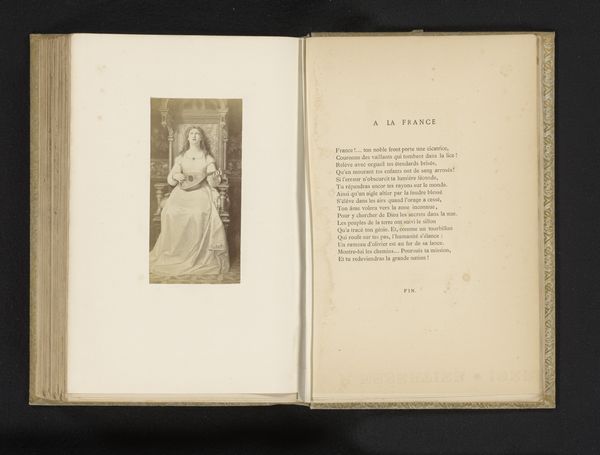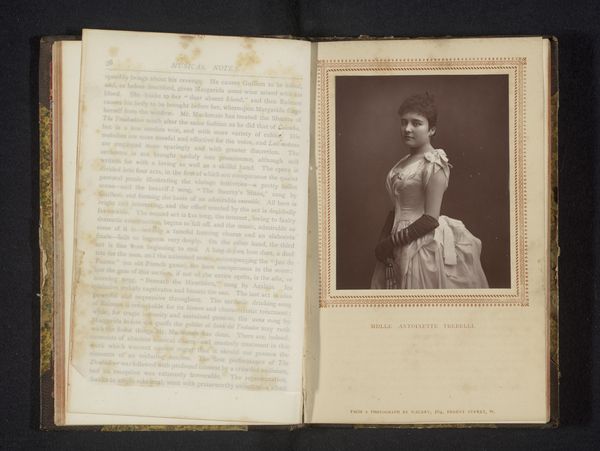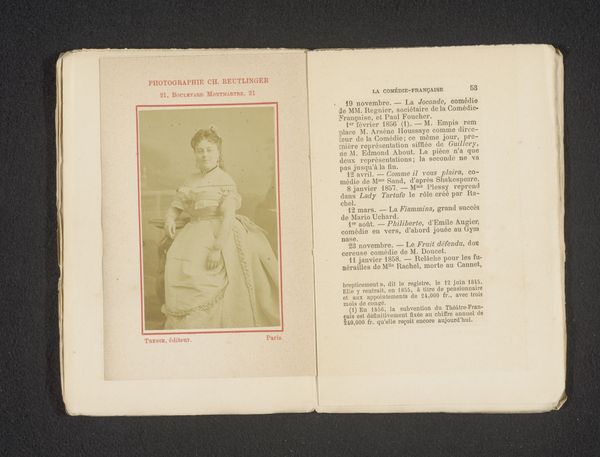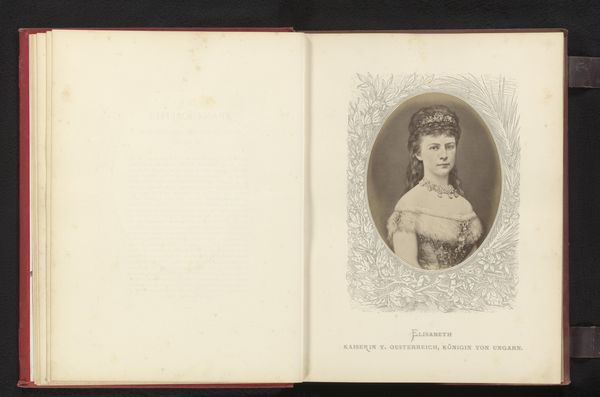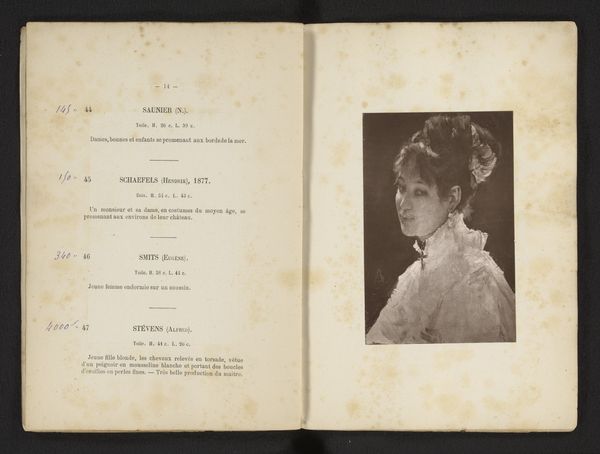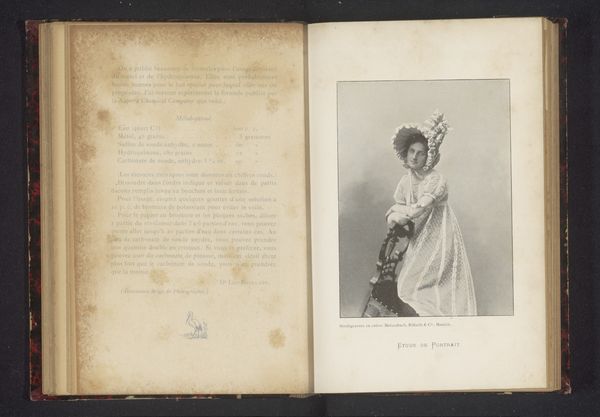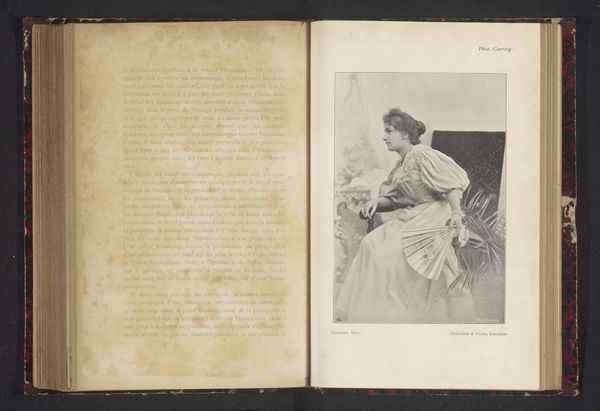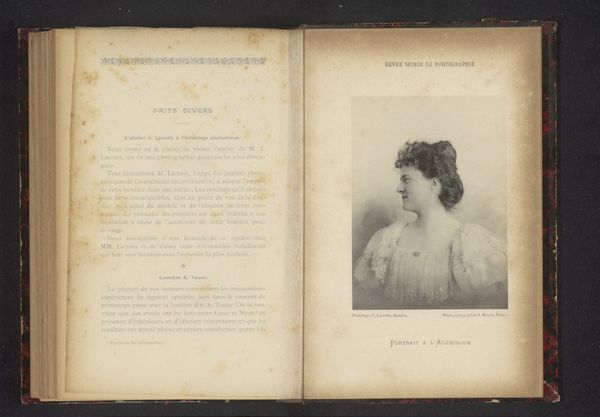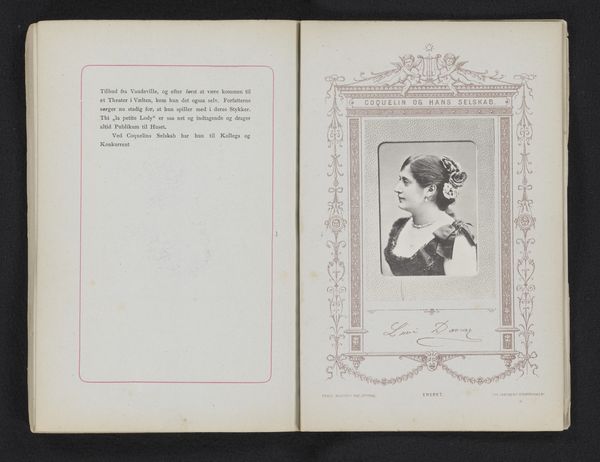
photography, gelatin-silver-print
#
portrait
#
photography
#
gelatin-silver-print
#
academic-art
Dimensions: height 90 mm, width 55 mm
Copyright: Rijks Museum: Open Domain
Curator: This is a gelatin-silver print, titled "Portret van Rita Sangalli," created by Charles Reutlinger around 1870-1875. It's currently housed in the Rijksmuseum. Editor: My first impression is of refined elegance, though a little subdued. The oval framing and sepia tones lend it a kind of timeless melancholy. I immediately want to examine the means by which such portraits were both made and then distributed. Curator: Reutlinger was a well-regarded photographer in Paris at the time, and this portrait would have circulated among the elite, solidifying Sangalli's public persona. She was a noted ballet dancer and personality of her day. Editor: Absolutely. We see here a product of late 19th-century photographic technology aimed at widespread reproduction. Look at the slight blurring, the texture of the gelatin silver; those processes, labor, and materials shaped how identities were consumed then. Her dress, ornamented but restrained, reflects middle-class material aspiration in her rise to success, an individual elevated from work and public acceptance. Curator: Precisely. And think of the performance aspect—the constructed image for public consumption, reinforcing social expectations through clothing and the theatrical persona Sangalli cultivated. She is both artist and muse in her self representation in the public imagination. Editor: The division between artisan and subject in these studio environments continues to blur and that's particularly visible in staged photography that circulated so easily as printed reproductions to the public. Also interesting is how the original owner assembled these prints in book form as visible on each side of the bookmatched paper it is preserved between. It begs a consideration of its display context now as it would've been understood at the time. Curator: Indeed. It's a study of representation, labor, and the public self. It allows us to examine art's function in reflecting and shaping perceptions, offering a valuable insight into societal expectations. Editor: It also shows us art's capacity to mediate between private and public personas, as a physical object distributed across societal lines that solidify reputation for the performer through very specific and considered use of materials.
Comments
No comments
Be the first to comment and join the conversation on the ultimate creative platform.

